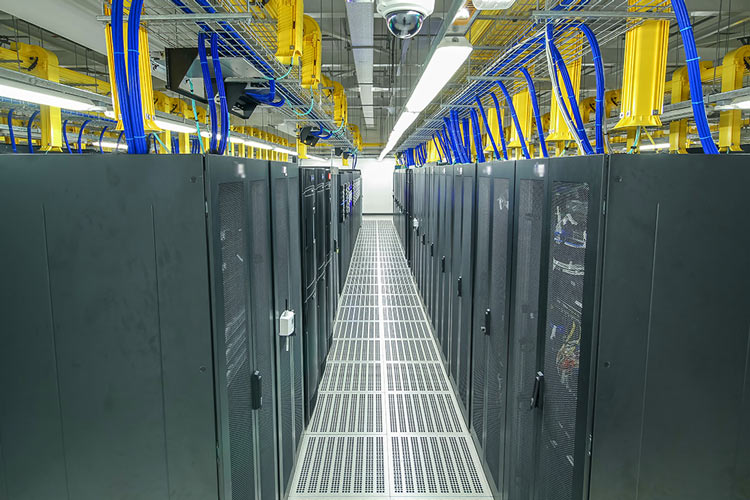Everyone knows how frustrating it is to be in a video call that’s lagging or dealing with a connection that’s constantly dropping. Most people probably agree that few things are more annoying than being interrupted repeatedly when trying to share a thought or a piece of important information. If you’ve been thinking, “Network optimization is for other people,” think again.
Outdated hardware, poor security measures, or incorrect network configurations: the reasons behind a slow network connection can be many. However, there’s a remedy for everything. In this case, it is called network optimization.
Network optimization is a collection of tools and practices that, when implemented, contribute to remodeling a company’s network to improve its performance.
This blog is going to break down what network optimization is and why it is essential for the efficiency of a business.
Network optimization: a definition
To put it very simply, network optimization is a set of procedures to improve network speed. It is a line of actions that target the potential causes and circumstances that are responsible for a slow network. Also, it’s not a “once done, it’s finished” thing; it’s rather a process. As a business’s needs change, changes in the network configurations must follow in order to maintain maximum efficiency.
Since so many companies depend on the Internet to carry out their daily tasks, the role of network optimization is crucial for facilitating efficiency in workflows. From collaboration to file sharing and meetings, there are countless areas where it’s important for a network to run adequately.
How the pandemic shaped network optimization
The pandemic has brought large-scale changes to the way we work and use networks, and it has contributed to changes in optimization as well. As a result, the term network optimization no longer refers only to a network in a physical space like an office, but it encompasses the different ways in which employees use the network as well.
Pre-pandemic, company networks were space-specific, having one physical location, which was the office, where employees used corporate devices to connect to corporate networks. During the pandemic, that changed since many employees had to work from home. Employees who worked remotely or hybrid could use their own devices and connect to different networks. As an outcome, the situation has changed.
This change has brought a few concerns for company networks since they no longer have control over what device and network an employee uses for work. Moreover, remote work increases the need to use applications like Zoom for communication, which can put a strain on networks, calling for network optimization.

The intricacies of network optimization
Network optimization is very important for a business to function efficiently. However, its intricacies extend far beyond enabling data to travel. Improving network performance involves continuously adjusting the elements of a network to improve speed in response to a company’s needs.
The major areas of network optimization are bandwidth management, reducing latency, and improving traffic efficiency. Network optimization ensures that all the critical applications are running smoothly. It is responsible for traffic shaping, load balancing, and protocol optimization, continuously adapting to the demands of users and changing technological advancements.
As such, network optimization is not some kind of first aid that can save a particular situation gone wrong, but it’s much more of a forward-thinking, strategic move. It’s about building and constantly improving network architectures to achieve the flexibility required to serve efficiently in a quickly changing technological environment.
The benefits of network optimization for businesses
Network optimization improves everyday business by ensuring a safer and more efficient work environment. The most important benefits are the following.
Increased protection
Falling victim to cyber threats is a leading cause of businesses closing. A data breach incident can cost a company millions, and many businesses fail to continue after experiencing a disaster. Network optimization helps with pinpointing network vulnerabilities and implementing security measures to protect against lurking cyber threats.
Improved reliability
All successful businesses have reliable networks at their core. Implementing advanced strategies for network optimization increases reliability while also reducing downtime and network congestion. These precautionary measures ensure that critical operations can continue to run even when unforeseen problems emerge. Predictive analytics modeling can help administrators improve and test network designs and understand the outcomes of the changes made before they are implemented.
Easier scalability
Network optimization makes scaling up easier for businesses by applying connectivity solutions that help a network adjust to changing needs. Many companies leverage the expertise of managed service providers and cloud specialists for optimizing networks. These services use the most proficient tools and strategies, which helps achieve the most optimal solution for a business’s network needs.
Professional network optimization can help by ensuring that a network can withstand rising demand, making it possible for a company to expand without worries.
Cost savings
An optimized network can decrease overall expenses by lowering resource usage and maximizing efficiency. Reduced blockages and optimized system resource usage facilitate a better flow of data throughout the network. A well-designed network architecture allows for a better distribution of resources, contributing to significant cost savings when you draw the bottom line.

Factors affecting network performance
A great variety of things can influence network performance. The following are the most prominent areas.
Network Security Measures
Some of today’s biggest problems, like data breaches, data loss, or delay issues, can be attributed to poor security measures and vulnerability points in the network. However, security issues can be avoided by network optimization.
Network architecture
Everything starts with how a network is designed. The way a network architecture is configured can have a great impact on how it performs over time. The number and placement of routers and other devices can be different from situation to situation. How they are organized has an influence on how the network operates, and consequently, it affects latency, reliability, and throughput.
Traffic-optimization
The volume of traffic on the network directly influences network performance. The number of users at a time and the applications they are using have a clear effect on how the network is behaving.
Bandwidth – a key element of network optimization
The available bandwidth is responsible for supporting traffic: if there’s not enough bandwidth to handle the traffic loads, the network will slow down. Sudden spikes in traffic can put a strain on a network if there are bandwidth limitations. This can lead to delayed data transfer rates and slower responses.
Network optimization solutions target these areas and repeatedly implement changes to avoid pitfalls and enhance performance.

Network optimization techniques
Let’s take a look at the basic techniques for improving network performance.
Traffic shaping and bandwidth management
Traffic shaping or packet shaping is a method used by network optimization professionals to regulate data transfer. It involves delaying the flow of less important data to manage congestion, allowing the more desired packets to travel more easily.
Bandwidth management deals with measuring and controlling the amount of traffic on a network link in order to avoid network congestion. It involves allocating a specific amount of bandwidth to applications, users, or devices and monitoring these to make sure that the allocated amount is not exceeded.
Load balancing for network optimization
Load balancing is a method in network optimization involving efficient traffic distribution across a multitude of servers and devices. This method helps maintain the network’s operation even in situations when a device/devices become overburdened.
Establishing Quality of Service (QoS)
Quality of Service helps control traffic and critical application performance by prioritizing traffic. This is done by taking into consideration the type and level of traffic required by various applications. Additionally, QoS helps network optimization by ensuring that the most important network traffic is treated as a priority as opposed to less critical traffic.
Monitoring
Network optimization uses monitoring to identify patterns and tendencies in traffic to improve performance. Monitoring helps to single out potential issues and prevent bigger problems from happening.
Data Compression
Compressed data uses less space, it is easier to store and move. This can decrease the volume of data transported in the network and, as a result, increase speed.
Router optimization
A well-configured system of routers and switches improves efficiency and decreases congestion, contributing to network optimization.
Data Caching
To improve speed and response times and decrease the load on the network, it is necessary to store regularly requested data in the local cache.
Device Maintenance
Maintaining devices and equipment is crucial for the efficient functioning of a network. Moreover, regular maintenance is the key to identifying potential issues in time.
Conclusion
Network optimization is a crucial part of technology that ensures any business’s easy, uninterrupted, and efficient functioning. There are many methods and techniques that – when implemented together – create a strategic approach to increase network efficiency. Every network is different, and recognizing the needs and implementing the right solutions for those needs is what network optimization achieves.
Got questions? Want to talk specifics? That’s what we’re here for.
Have one of our experts contact you to talk about the details. Discover how Volico Data Centers’ network and infrastructure services can help support your business’s needs and help you grow.
• Call: (305) 735-8098
• Chat with a member of our team to discuss which solution best fits your needs.












